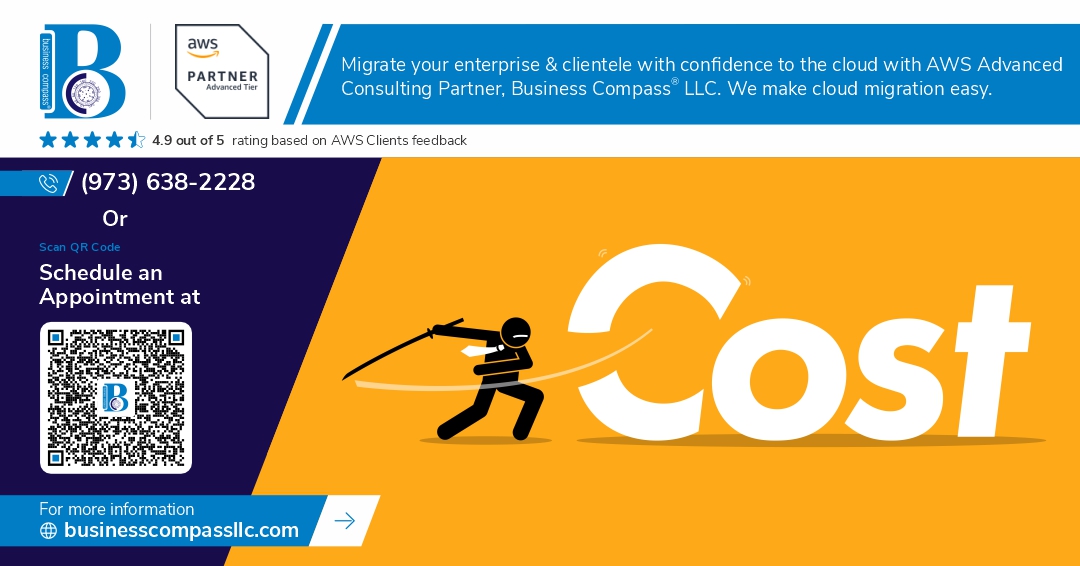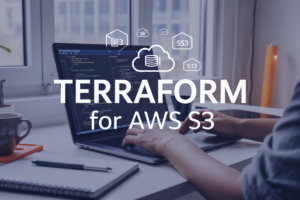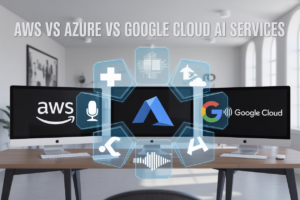Startups face a tough choice when it comes to cloud infrastructure: jump into AWS for its powerful tools and scalability, or worry about the costs spiraling out of control as they grow. This guide is for startup founders, CTOs, and early-stage entrepreneurs who need to understand whether AWS delivers real value or becomes a budget drain.
AWS for startups offers incredible advantages like rapid scaling, enterprise-grade tools, and global reach that can accelerate growth. But startup cloud costs can quickly become overwhelming when hidden fees, complex pricing structures, and poor cost optimization catch founders off guard. Many early stage startup AWS bills shock teams who thought they had their startup AWS budget under control.
We’ll explore how AWS drives startup growth through key advantages that give small companies enterprise capabilities from day one. Then we’ll uncover the hidden cost traps that impact startup budgets, including AWS hidden fees that aren’t obvious upfront but can multiply your monthly bills. Finally, we’ll break down the real financial impact on early-stage companies and share practical strategies for maximizing value while keeping your startup infrastructure costs manageable.
AWS Advantages That Drive Startup Growth
Rapid Infrastructure Deployment Without Capital Investment
AWS for startups eliminates the traditional barrier of massive upfront infrastructure investments. Companies can launch servers, databases, and storage systems within minutes rather than weeks or months required for physical hardware procurement. This pay-as-you-use model transforms startup cloud strategy by converting fixed capital expenses into variable operational costs. Founders can allocate precious funding toward product development and market expansion instead of server rooms and IT equipment. The elastic nature of AWS services means startups scale resources up during traffic spikes and down during quiet periods, optimizing startup AWS budget allocation.
Global Scaling Capabilities From Day One
Startups gain immediate access to AWS’s worldwide network of data centers spanning multiple continents and availability zones. This global presence allows companies to serve customers with low latency regardless of geographic location. A startup launching in Silicon Valley can instantly deploy applications in Europe, Asia, or South America without establishing physical presence or negotiating local hosting agreements. Content delivery networks and edge computing services ensure fast loading times worldwide. Regional compliance requirements become manageable through AWS’s localized infrastructure offerings in different countries.
Access to Enterprise-Grade Security and Compliance Features
Small teams gain security capabilities typically reserved for large enterprises with dedicated IT departments. AWS provides built-in encryption, identity management, network firewalls, and threat detection services that would cost millions to develop internally. Startups achieve compliance certifications like SOC 2, HIPAA, and GDPR through AWS’s pre-certified services and shared responsibility model. Regular security updates and patches happen automatically, reducing the burden on startup technical teams. Multi-factor authentication, role-based access controls, and audit logging create robust security frameworks without requiring specialized security personnel.
Innovation Through AI and Machine Learning Services
AWS democratizes artificial intelligence by offering pre-trained models and machine learning tools through simple APIs. Startups can integrate natural language processing, image recognition, recommendation engines, and predictive analytics without hiring expensive AI specialists. Services like Amazon Rekognition, Comprehend, and SageMaker enable rapid prototyping of intelligent features. Computer vision capabilities can be added to mobile apps, while chatbots powered by AWS Lex enhance customer service. These AI services transform startup cloud costs from prohibitive to accessible, allowing small teams to compete with tech giants on innovation speed and capability.
Hidden Cost Traps That Impact Startup Budgets
Data Transfer and Bandwidth Charges That Scale Unexpectedly
AWS data transfer costs can blindside startups when traffic grows beyond free tier limits. Outbound data transfers cost $0.09 per GB after 100GB monthly, while cross-region transfers add extra fees. Startups serving global users through multiple availability zones face compounding charges that can balloon startup cloud costs unexpectedly as user bases expand.
Resource Over-Provisioning During Development Phases
Development teams often launch oversized instances “just in case,” leading to massive waste in startup AWS budget allocation. A t3.large instance costs 4x more than t3.small, yet developers frequently choose larger sizes for convenience. This over-provisioning mentality during testing phases can consume 60-80% of cloud computing costs startup budgets before reaching production, creating unsustainable burn rates.
Multi-Service Integration Fees and Dependencies
AWS’s ecosystem creates hidden interdependencies that inflate startup infrastructure costs through service-to-service communication fees. API Gateway charges per request, Lambda invocation costs compound with CloudWatch logging fees, and RDS backup storage adds monthly recurring charges. These micro-transactions across integrated services can double expected AWS pricing for small business operations, making cost forecasting extremely challenging for early-stage companies.
Real Financial Impact on Early-Stage Companies
Monthly AWS Spending as Percentage of Total Operating Costs
Early-stage startups typically allocate 15-25% of their monthly operating budget to AWS services, with tech-heavy companies reaching 35%. A typical Series A startup spending $50,000 monthly might dedicate $7,500-12,500 to cloud infrastructure. Pre-revenue companies often see AWS costs consume 40-60% of their burn rate, creating significant pressure on runway extension.
Cost Comparison Between AWS and Traditional Infrastructure
Traditional server infrastructure requires $15,000-30,000 upfront investment plus $2,000-5,000 monthly maintenance for comparable capacity. AWS eliminates capital expenditure but charges $3,000-8,000 monthly for similar resources through pay-as-you-go pricing. Startups save 60-70% on initial setup costs while paying 20-40% more in operational expenses during peak usage periods.
Break-Even Point Analysis for Different Startup Sizes
Pre-seed startups with minimal traffic break even with AWS immediately due to zero upfront costs. Seed-stage companies reach cost parity around month 18-24 when comparing total AWS expenses to traditional infrastructure investments. Series A startups handling significant traffic loads often find traditional infrastructure cheaper after 12-18 months, especially with predictable usage patterns and dedicated DevOps resources.
Cash Flow Implications During Funding Gaps
AWS bills accumulate monthly without the flexibility of deferred payments common with traditional vendors. Startups facing funding delays experience immediate service throttling or suspension when payments lapse. Smart founders maintain 3-6 months of AWS reserves or negotiate extended payment terms through startup programs. Cash flow gaps become critical when AWS represents 20%+ of monthly expenses during revenue shortfalls.
Strategic Timing for AWS Adoption
When to Move From Free Tier to Paid Services
AWS free tier offers generous resources for early-stage startups, including 750 hours of EC2 compute time and 5GB of S3 storage monthly. Most startups should transition to paid services when they consistently hit free tier limits or when their monthly AWS usage exceeds $50-100. The sweet spot comes when your startup cloud costs represent less than 5% of monthly revenue, ensuring you’re not burning cash on premature infrastructure scaling.
Optimal Growth Stage for Cloud Migration
The perfect time for comprehensive AWS migration typically occurs during Series A funding or when reaching 10,000+ active users. At this stage, startups have validated their product-market fit and can justify AWS pricing for small business operations. Early stage startup AWS adoption works best when you have dedicated technical resources to manage cost optimization. Companies generating $50K+ monthly recurring revenue can absorb cloud computing costs startup while benefiting from AWS scalability.
Signs Your Startup Has Outgrown AWS Benefits
Your startup may have outgrown AWS benefits when monthly bills exceed 15% of revenue or when you’re paying for unused resources consistently. Other red flags include spending more than $5,000 monthly without proper cost monitoring, or when AWS hidden fees start impacting your startup AWS budget significantly. Consider hybrid solutions or alternative providers when your infrastructure needs become predictable and you can negotiate better rates elsewhere. The key is balancing startup cloud strategy with actual usage patterns.
Maximizing Value While Controlling Expenses
Reserved Instances and Savings Plans for Predictable Workloads
Smart startups commit to Reserved Instances for predictable workloads, cutting AWS costs by up to 75% compared to on-demand pricing. Savings Plans offer similar discounts with more flexibility across different instance types and regions. Target your database servers, web servers, and consistent background processing workloads for these commitments. Start with one-year terms to balance savings with startup flexibility.
Automated Cost Monitoring and Alert Systems
Set up AWS Cost Explorer and CloudWatch billing alerts before your first month ends. Configure notifications when spending exceeds 50%, 75%, and 90% of your monthly budget. Third-party tools like CloudHealth or Datadog provide deeper insights into cost patterns and resource utilization. Daily cost monitoring prevents surprise bills that can drain startup cash reserves overnight.
Right-Sizing Resources Based on Actual Usage Patterns
Most startups over-provision resources by 40-60% out of fear of performance issues. Use AWS Trusted Advisor and Cost Optimization Hub to identify underutilized instances. Monitor CPU, memory, and network usage for at least two weeks before downsizing. Schedule automatic scaling based on real traffic patterns rather than worst-case scenarios. Right-sizing saves 20-30% on compute costs immediately.
Alternative Services That Deliver Similar Results at Lower Costs
Consider DigitalOcean, Linode, or Vultr for simple web applications and development environments. These providers offer predictable pricing and simpler configurations at 50-70% less cost than AWS. Use managed databases like PlanetScale or Supabase instead of RDS for smaller workloads. Keep AWS for complex services while moving commodity workloads to cost-effective alternatives.
Negotiating Enterprise Agreements for High-Growth Startups
Startups spending $10K+ monthly can negotiate custom pricing through AWS Activate or direct sales teams. Enterprise Discount Programs offer 5-15% savings on committed spend levels. Bundle credits with technical support upgrades for better value. Document your growth trajectory and funding rounds to strengthen negotiations. Even small concessions add up to significant savings over time.
AWS clearly offers startups the infrastructure and scalability they need to grow fast, but the financial reality isn’t always straightforward. Those hidden costs can sneak up on you quickly, especially when you’re already watching every dollar. The key is understanding when AWS makes sense for your stage of growth and having a solid plan to monitor spending before it gets out of hand.
The smartest move is treating AWS adoption like any other major business decision. Start with what you actually need, not what you might need someday. Set up proper monitoring from day one, and don’t be afraid to reassess your setup regularly. With the right approach, AWS can be a powerful ally for your startup’s growth without breaking the bank.




















